Prvo Poglavlje: Avantura Formiranja Atoma
Svemir, čije ogromne dimenzije pomeraju granice ljudskog shvatanja, savršeno funkcioniše, počiva na osetljivoj ravnoteži u okviru velikog reda, i postoji tako od prvog trenutka svog formiranja. Kako je ovaj ogromni svemir nastao, kuda ide i kako deluju zakoni koji u njemu održavaju red i ravnotežu, oduvek su bila pitanja i još uvek su od posebnog interesa za ljude. Naučnici su izvršili bezbrojna istraživanja i izneli različite argumente i teorije, tragajući za odgovorima. Zato naučnici koji prate red i oblikovanje svemira, pažljivo koristeći svoj razum i svest, mogu da objasne to savršenstvo.
In the creation of the heavens and the earth, and the alternation of night and day, there are Signs for people with intelligence. (Surat Al 'Imran: 190)
Međutim, oni naučnici koji zanemaruju dokaze stvaranja imaju velike poteškoće prilikom odgovaranja na ova beskrajna pitanja. Oni ne oklevaju da pribegnu demagogiji, lažnim teorijama lišenim bilo kakve naučne osnove, a ako se nađu u neprilici, čak i obmanama, da bi odbranili teorije koje su potpuno suprotstavljene stvarnosti. Ipak, celokupan razvoj koji se odigrao u nauci u skorije vreme, do početka 21. veka, doveo nas je do jedinstvene činjenice: svemir je stvoren od strane Tvorca, koji poseduje neuporedivu moć i bezgraničnu mudrost.
Stvaranje Svemira
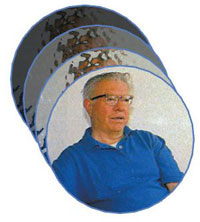 |
|
Sir Fred Hoyle |
Vekovima su ljudi tragali za odgovorom na pitanje "Kako je svemir nastao". Hiljade modela svemira izloženo je i hiljade teorija stvoreno tokom istorije. Međutim, pregled tih teorija otkriva da sve one u svojoj osnovi imaju jedan od dva različita modela. Prvi je koncept o beskonačnom svemiru bez početka, koji više nema nikakvu naučnu osnovu. Drugi kaže da je svemir stvoren, što je trenutno od strane naučne zajednice prihvaćeno kao "standardni model".
Prvi model, koji se nije pokazao kao valjan, zastupao je mišljenje da svemir postoji beskonačno dugo i da će beskrajno postojati u svom sadašnjem stanju. Ta ideja o beskrajnom svemiru razvijena je u drevnoj Grčkoj i našla je svoj put u zapadni svet kao proizvod materijalističke filozofije koja je oživela sa renesansom. U osnovi renesansnog života pojavljuje se težnja za ponovnim ispitivanjem radova mislilaca iz drevne Grčke. Tako su materijalistička filozofija i koncept o beskrajnom svemiru, koji je isticala ta filozofija, uzeti sa prašnjavih polica istorije i od mnogih filozofskih i ideoloških grupa, predstavljeni kao naučne činjenice.
Materijalisti kao što su Karl Marks i Fridrih Engels energično su prihvatili tu ideju, koja je pripremila očigledno čvrsto tlo za njihovu materijalističku ideologiju, igrajući tako značajnu ulogu u procesu uvođenja tog modela u istoriju 20. veka.
Po tom modelu "beskrajnog svemira" koji je bio popularan tokom prve polovine 20. veka, svemir nije imao početak, ni kraj. Svemir nije stvoren, niti će ikada prestati da postoji. Po toj teoriji, koja je takođe postavila osnovu materijalističkoj filozofiji, svemir je imao statičnu strukturu. Ipak, kasnija naučna otkrića pokazala su da je ta teorija potpuno pogrešna i nenaučna. Svemir ne postoji bez početka; on ima svoj početak.
Ideja da je svemir beskrajan, to jest, da nema početak, uvek je bila početna tačka za bezbožnost i ideologije koje čine grešku negiranja Tvorca. To se pojavljuje zato što prema njihovom gledištu, treba istaći stav - ako svemir nije imao početak, onda nije bilo ni Tvorca. Ipak, nauka je ubrzo otkrila presudne činjenice da ti materijalistički argumenti nisu valjani i da svemir ima svoj početak. Te činjenice imale su samo jedno značenje: "stvaranje".
Poznati britanski astronom Fred Hojl (Fred Hoyle) nalazi se među onima koji su bili uznemireni tom činjenicom. Svojom teorijom "stabilnog stanja" Hojl je tvrdio da se univerzum širio i da je beskrajan po razmeri, i da je bez početka ili kraja. Po tom modelu, kako se svemir širio, materija je nastajala spontano i u količinama koliko je to bilo potrebno. Ta teorija, koja je bila zasnovana na krajnje neupotrebljivim premisama i koja je napredovala sa jedinom brigom podržavanja ideje o "beskrajnom svemiru bez početka ili kraja" bila je neposredno suprotna teoriji stvaranja. Hojl i drugi nastavili su da se opiru tome, ali je celokupan naučni razvoj delovao protiv njih.
Priznanja su usledila, jedno po jedno, od imena koja su godinama branila koncept "beskrajnog svemira". Denis Siama (Dennis Sciama) koji je branio teoriju stabilnog stanja zajedno sa Fredom Hojlom, opisao je svoj položaj u odnosu na činjenice za stvaranje svemira. Rekao je da je prvobitno zauzeo stav zajedno sa Hojlom, ali je kako su činjenice počele da se gomilaju morao da prizna da je igra završena i da je teorija stabilnog stanja morala da bude odbačena.(2)
 |
|
The universe came into existence out of nothing with a Big Bang. The present perfect system of the universe came about because of the scattering of all particles and forces that were formed in great harmony and order from the first moment of this big explosion. |
The Expansion of the Universe and the Big Bang
 |
|
According to the Doppler effect, if a galaxy stays at a constant distance from the earth, the spectra of light waves will appear in the "standard" position (top). If the galaxy is moving away from us, the waves will seem stretched and red shifted (middle). If the galaxy is moving towards us, the waves will seem squashed up and blue shifted (bottom). |
In the 20th century, great strides were made in the field of astronomy. First, the Russian physicist Alexandre Friedmann discovered in 1922 that the universe did not have a static structure. Starting out from Einstein's theory of relativity, Friedmann calculated that even a tiny impulse might cause the universe to expand or contract. Georges Lemaître, one of the most famous astronomers of Belgium, was the first to recognise the importance of this calculation. These calculations led him to conclude that the universe had a beginning and that it was continuously expanding right from the outset. There was another very important point Lemaître raised: according to him, there should be a radiation surplus left over from the big bang and this could be traced. Lemaître was confident that his explanations were true although they initially did not find much support in the scientific community. Meanwhile, further evidence that the universe was expanding began to pile up. At that time, observing a number of stars through his huge telescope, the American astronomer Edwin Hubble discovered that the stars emitted a red shifted light depending on their distances. With this discovery, which he made at the California Mount Wilson Observatory, Hubble challenged all scientists who put forward and defended the steady state theory, and shook the very basis of the model of the universe held until then.
Hubble's findings depended on the physical rule that the spectra of light beams travelling towards the point of observation tend towards violet while the spectra of light beams moving away from the point of observation tend towards red. This showed that the celestial bodies observed from the Californian Mount Wilson Observatory were moving away from the earth.
 |
|
a) Edwin Hubble b) The analysis of the light of the two stars of Alpha Centauri over a period of time showed a series of changes in their spectra. The way the red and blue shifts vary revealed a picture of two stars completing orbits around each other once every 80 years. c) Albert Einstein, during a visit to the Wilson Observatory, where Edwin Hubble made his observations. |
?????
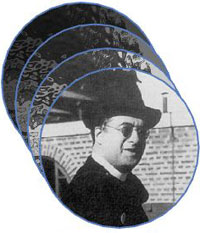 |
|
Georges Lemaître |
Further observation revealed that the stars and galaxies weren't just racing away from us; they were racing away from each other as well. This movement of celestial bodies proved once more that the universe is expanding. In Stephen Hawking's Universe, David Filkin relates an interesting point about these developments:
…Within two years, Lemaître heard the news he had scarcely dared hope for. Hubble had observed that the light from galaxies was red shifted, and, according to Doppler effect, this had to mean the universe was expanding. Now it was only a matter of time. Einstein was interested in Hubble's work anyway and resolved to visit him at the Mount Wilson Observatory. Lemaître arranged to give a lecture at the California Institute of Technology at the same time, and managed to corner Einstein and Hubble together. He argued his "primeval atom" theory carefully, step by step, suggesting that the whole universe had been created "on a day which had no yesterday." Painstakingly he worked through all the mathematics. When he had finished he could not believe his ears. Einstein stood up and announced that what he had just heard was "the most beautiful and satisfying interpretation I have listened to" and went on to confess that creating the "cosmological constant" was "the biggest blunder" of his life.1
Further observations on the expansion of the universe gave way to new arguments. Starting from this point, scientists ended up with a model of a universe that became smaller as one went back in time, eventually contracting and converging at a single point, as Lemaître had argued. The conclusion to be derived from this model is that at some point in time, all matter in the universe was crushed together in a single point-mass that had "zero volume" because of its immense gravitational force. Our universe came into being as the result of the explosion of this point-mass that had zero volume and this explosion has come to be called the "Big Bang".
The Big Bang pointed to another matter. To say that something has zero volume is tantamount to saying that it is "nothing". The whole universe is created from this "nothing". Furthermore, this universe has a beginning, contrary to the view of materialism, which holds that "the universe has existed from eternity".
Big Bang with Evidence
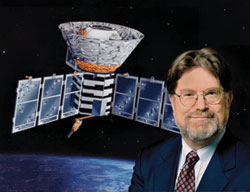 |
|
George Smoot |
Once the fact that the universe started to form after a great explosion was established, astrophysicists gave a further boost to their researches. According to George Gamow, if the universe was formed in a sudden, cataclysmic explosion, there ought to be a definite amount of radiation left over from that explosion which should be uniform throughout the universe.
In the years following this hypothesis, scientific findings followed one another, all confirming the Big Bang. In 1965, two researchers by the name of Arno Penzias and Robert Wilson chanced upon a form of radiation hitherto unnoticed.
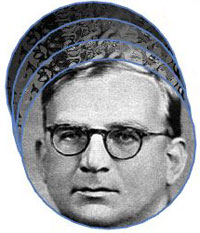 |
|
George Gamov |
Called "cosmic background radiation", it was unlike anything coming from anywhere else in the universe for it was extraordinarily uniform. It was neither localised nor did it have a definite source; instead, it was distributed equally everywhere. It was soon realised that this radiation is the relic of the Big Bang, still reverberating since the first moments of that great explosion. Gamow had been spot-on, for the frequency of the radiation was nearly the same value that scientists had predicted. Penzias and Wilson were awarded the Nobel Prize for their discovery.
It took only eight minutes for George Smoot and his NASA team to confirm the levels of radiation reported by Penzias and Wilson, thanks to the COBE space satellite. The sensitive sensors on board the satellite earned a new victory for the Big Bang theory. The sensors verified the existence of the hot, dense form remaining from the first moments of the Big Bang. COBE captured evidentiary remnants of the Big Bang, and the scientific community was compelled to acknowledge it.
Other evidence had to do with the relative amounts of hydrogen and helium in the universe. Calculations revealed that the proportion of hydrogen-helium gasses in the universe is in accord with theoretical calculations of what should remain after the Big Bang.
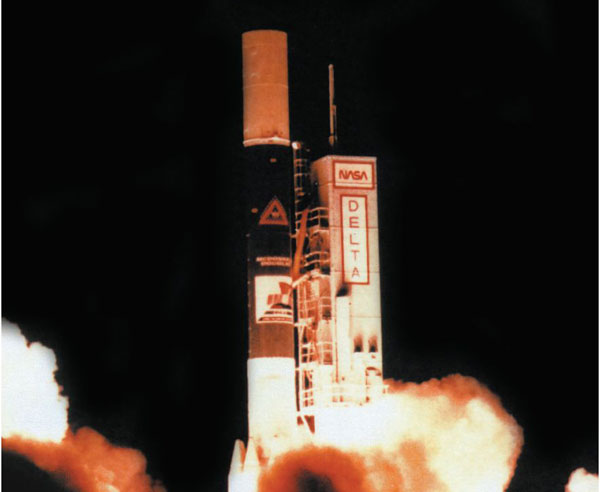 |
|
The launch of the COBE satellite further substantiated that the universe was formed as a result of a big explosion. |
The discovery of compelling evidence caused the Big Bang theory to gain the complete approval of the scientific world. In an article in its October 1994 issue, Scientific American noted that "the Big Bang model was the only acknowledged model of the 20th century"
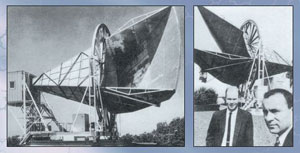 |
|
The gigantic horn antenna at Bell Laboratories where Arno Penzias and Robert Wilson discovered the cosmic background radiation. Penzias and Wilson were awarded the Nobel Prize for this discovery in 1978. |
Confessions were forthcoming one by one from the names who had defended the "infinite universe" concept for years. Defending the steady-state theory alongside Fred Hoyle for years, Dennis Sciama described the final position they had reached after all the evidence for the Big Bang theory was revealed:
There was at that time a somewhat acrimonious debate between some of the proponents of the steady state theory and observers who were testing it and, I think, hoping to disprove it. I played a very minor part at that time because I was a supporter of the steady state theory, not in the sense that I believed that it had to be true, but in that I found it so attractive I wanted it to be true. When hostile observational evidence became to come in, Fred Hoyle took a leading part in trying to counter this evidence, and I played a small part at the side, also making suggestions as to how the hostile evidence could be answered. But as that evidence piled up, it became more and more evident that the game was up, and that one had to abandon the steady state theory.2
Tvorac Je Stvorio Svemir
Uz obilje činjenica koje je nauka otkrila, teza o "beskonačnom svemiru" bila je odbačena. Danas postoji samo jedan ozbiljan odgovor koji može biti dat na pitanje ko je pokrenuo nastanak sveta: Tvorac koji je stvorio Zemlju i nebesa i njihov veliki red. Mnogi naučnici, bilo da su religiozni ili ne, priznaju tu istinu. Iako bi mogli da odbijaju da priznaju tu činjenicu na naučnim skupovima, njihova priznanja između redova lako se čitaju. Ugledni filozof ateista Entoni Flu (Anthony Flew) kaže:
 |
"Opšte je poznato da je priznanje dobro za dušu. Zato ću početi priznajući da ateista mora da bude zbunjen savremenim kosmološkim jednoglasnim stavom. Izgleda da kosmolozi obezbeđuju naučni dokaz za ono zbog čega je Sveti Toma tvrdio da ne može biti filozofski dokazano; to jest da je svemir imao početak. Sve dok svemir može biti udobno posmatran, kao da je ne samo bez kraja već takođe i bez početka, lako se može tvrditi da njegovo prosto postojanje i sve bude otkriveno za njegove najosnovnije odlike, treba da bude prihvaćeno kao krajnje objašnjenje. Iako verujem da to i dalje ostaje tačno, svakako nije ni lako ni jednostavno održavati tu poziciju."3
Pojedini naučnici kao što je britanski fizičar, materijalista H. P. Lipson (H. P. Lipson), priznaju da moraju da prihvate nove dokaze bez obzira da li to žele ili ne:
"Ako živa materija nije stvorena međusobnim dejstvom atoma, prirodnih sila i zračenja, kako je onda nastala?... Međutim, smatram da moramo... priznati da je jedino prihvatljivo objašnjenje stvaranje. Znam da je to anatema za fizičare, kao što je i za mene, ali ne smemo da odbacimo ono što nam se ne sviđa, ako ga eksperimentalne činjenice podržavaju."4
Nauka kao zaključak ističe jedinu stvarnost bez obzira da li se naučnicima, materijalistički opredeljenim, to sviđa ili ne. Materija i vreme stvoreni su od strane svemoćnog Tvorca, koji je stvorio nebesa, zemlju i sve što je u njima.
It is Allah who created the seven heavens and of the earth the same number, the Command descending down through all of them, so that you might know that Allah has power over all things and that Allah encompasses all things in His knowledge. (Surat at-Talaq: 12)
The Signs of the Qur'an
In addition to explaining the universe, the Big Bang model has another important implication. As the quotation from Anthony Flew cited above points out, science has proven an assertion hitherto supported only by religious sources.
This truth is the reality of creation from nothingness. This has been declared in the scriptures that have served as guides for mankind for thousands of years.
In the only book revealed by Allah that has survived completely intact, the Qur'an, there are statements about the creation of the universe from nothing as well as how this came about that are suggestive of 20th-century ideas and yet were revealed fourteen centuries ago.
First of all, the creation of this universe from nothingness is revealed in the Qur'an as follows:
He (Allah) is the Originator of the heavens and the earth… (Surat al-An'am: 101)
Another important point revealed in the Qur'an fourteen centuries before the modern discovery of the Big Bang and findings related to it is that when it was created, the universe occupied a very tiny volume:
Do those who are disbelievers not see that the heavens and the earth were sewn together and then We unstitched them and that We made from water every living thing? So will they not have faith? (Surat al-Anbiya': 30)
There is a very important choice of words in the original Arabic whose translation is given above. The word ratq translated as "sewn to" means "mixed in each, blended" in Arabic dictionaries. It is used to refer to two different substances that make up a whole. The phrase "We unstitched" is the verb fataqa in Arabic and implies that something comes into being by tearing apart or destroying the structure of ratq. The sprouting of a seed from the soil is one of the actions to which this verb is applied.
Let us take a look at the verse again with this knowledge in mind. In the verse, sky and earth are at first subject in the condition of ratq. They are separated (fataqa) with one coming out of the other. Intriguingly, cosmologists speak of a "cosmic egg" that consisted of all the matter in the universe prior to the Big Bang. In other words, all the heavens and earth were included in this egg in a condition of ratq. This cosmic egg exploded violently causing its matter to fataqa and in the process created the structure of the whole universe.
Another matter in the Qur'an that could be interpreted as the expansion of the universe, which was discovered in the late 1920s. Hubble's discovery of the red shift in the spectrum of starlight is revealed in the Qur'an as :
It is We Who have built the universe with (Our creative) power, and, verily, it is We Who are steadily expanding it. (Surat adh-Dhariyat: 47)
In short, the findings of modern science increasingly point towards the truth that is revealed in the Qur'an and do not support materialist dogma. Materialists may claim this all as "coincidence" but the plain fact is that the universe came into being as a result of an act of creation on the part of Allah. The only true knowledge about the origin of universe is to be found in the word of Allah as revealed to us.
Stvaranje Materije
Šta se dogodilo u razdoblju stvaranja, koji čak ne možemo ni da predstavimo? Fizičari do sada nisu mogli da razviju teoriju koja u potpunosti objašnjava događaje koji su se odigrali u tom trenutku.(5)
To je zbog toga što naučnici nemaju podatke koji su im potrebni da izvrše proračune. Zakoni matematike i fizike su u ćorsokaku zbog tih granica. To jest, i ono što se odigralo pre i ono što se desilo u prvim trenucima stvaranja, svaki detalj koji počiva na veoma osetljivoj ravnoteži, ima svoju stvarnost izvan granica ljudskog uma i fizike.
To stvaranje, koje je počelo pre početka vremena, dovelo je trenutak po trenutak do oblikovanja materijalnog svemira i zakona fizike.
As mentioned above, in physics, everything can be calculated from 10–43 seconds onwards, and energy and time can be defined only after this moment. At this point of the creation, the temperature is 1032 (100,000,000,000,000,000,000,000,000,000,000) K. To draw a comparison, the temperature of the sun is expressed in millions (108) and the temperature of some stars much larger than the sun is expressed in billions (1011). That the highest measurable temperature at present is limited to billions of degrees reveals how high the temperature was at 10-43 seconds.
- When we go one step further than this period of 10-43 seconds, we come to the point at which time is at 10-37 seconds. The time lapse between these two periods is not something like one or two seconds. We are talking about a time lapse as short as one over quadrillion times quadrillion of a second. The temperature is still extraordinarily high, at 1029 (100,000,000,000,000,000,000,000,000,000) K. No atoms were yet created at this stage.6
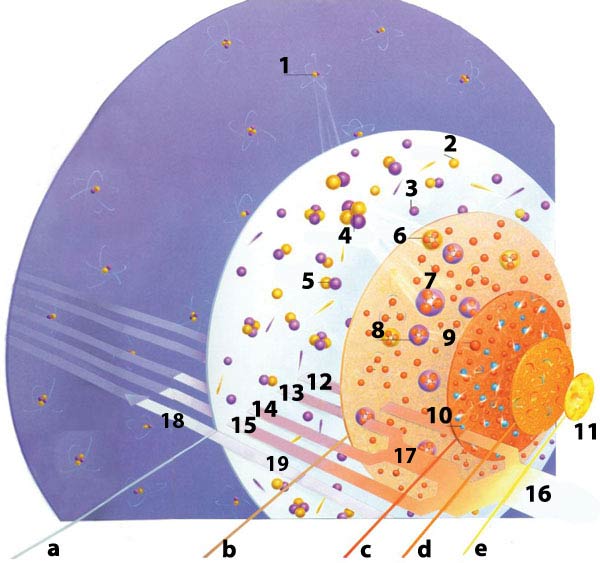 |
|
|
Following moment "0" when no matter or time existed and when the explosion occurred, the universe, and its building blocks, the atoms, were created out of nothing within a great scheme. |
|
|
a) 3 MINUTES: Protons and neutrons form atomic nuclei. |
|
|
1) Electrons captured |
10) Antiquark |
One more step, and we are at 10-2 seconds. This time period indicates one hundredth of a second. By now, the temperature is 100 billion degrees. At this point, the "early universe" has started to form. Particles like the proton and neutron forming the nucleus of the atom have not yet appeared. There is only the electron and its antiparticle, the positron (anti-electron), because the temperature and speed of the universe at that point only allow the formation of these particles. In less than a second after the explosion has taken place out of nothing, electrons and positrons have formed.
From this moment on, the time of the formation of each sub-atomic particle is very important. Every particle has to emerge at a specific moment so that the current rules of physics may be established. It is of great importance which particle is to form first. Even a slight deviation in the sequence or timing would make it impossible for the universe to take its current shape.
Zastanimo i razmislimo.
Teorija stvaranja obezbeđuje dokaz za postojanje Tvorca pokazujući da celokupna materija od koje je izgrađen svemir potiče od Njega. Uradila je još više i pokazala da su gradivni blokovi - atomi - takođe nastali stvaranjem. Izuzetna ravnoteža i red u ovim česticama vredni su pažnje. Svemir za svoj sadašnji oblik duguje toj ravnoteži koja će detaljnije biti opisana na narednim stranama. Ta ravnoteža dozvoljava nam da živimo mirnim životom. Ukratko, savršen red i nepromenljivi zakoni, "zakoni fizike", formirali su se tokom stvaranja. To dokazuje da je svaki trenutak, koji je pratio stvaranje svemira, bio savršeno oblikovan.
 |
|
Do you not see that everyone in the heavens and everyone on the earth prostrates to Allah, and the sun and moon and stars and the mountains, trees and beasts and many of mankind? But many of them inevitably merit punishment. Those Allah humiliates will have no one to honour them. Allah does whatever He wills. (Surat al-Hajj: 18) |
The next step is the moment at which a time of 10-1 seconds has elapsed. At this moment, the temperature is 30 billion degrees. Not even one second has elapsed from t = 0 moment to this stage. By now, neutrons and protons, the other particles of the atom, have started to appear. The neutrons and protons, the perfect structures of which we will analyse in the following sections, were created out of nothing within a time period even shorter than a second.
Let us come to the first second after the explosion. The massive density at this time again gives a colossal figure. According to calculations, the density value of the mass present at that stage is 3.8 billion kilograms per litre. It may be easy to express this figure, termed as billions of kilograms, arithmetically, and to show it on paper. Yet, it is impossible to conceive of this figure exactly. To give a very simple example to express the magnitude of this figure, we can say "if Mount Everest in the Himalayas had this density, it could swallow our world in a moment with the force of gravitation it would possess."7
The most distinctive characteristic of the subsequent moments is that by then, the temperature has reached a considerably lower level. At that stage, the universe is approximately 14 seconds old, has a temperature of 3 billion degrees and continues to expand at a dramatic speed.
This is the stage where the steady atomic nuclei, like hydrogen and helium nuclei, have started to form. One proton and one neutron have for the first time found conditions conducive to their co-existing. These two particles, which have a mass straddling the line between existence and non-existence, have, because of the force of gravitation, started resisting the tremendous rate of expansion. It is obvious that a dramatically conscious and controlled process is in progress here. A massive explosion gives way to great equilibrium and precise order. Protons and neutrons have started to come together to form the atom, the building block of matter. It is certainly totally impossible for these particles to have the power and consciousness to establish the delicate balances required for the formation of matter.
During the epoch following this formation, the temperature of the universe has dropped to one billion degrees. This temperature is 60 times the temperature at the core of our sun. Only 3 minutes and 2 seconds have elapsed from the first instant to this one. By now, sub-atomic particles like photons, protons, anti protons, neutrinos and anti-neutrinos are abundant. The quantities of all the particles existing in this phase and their interactions with each other are extremely critical. So much so that the slightest variation in the quantity of any particle will destroy the energy level set by them and prevent the conversion of energy into matter.
 |
|
The Hydrogen Atom |
Take electrons and positrons for example: when electrons and positrons come together, energy is produced. Therefore, the numbers of both particles are very important. Let us say that 10 units of electrons and 8 units of positrons meet. In this case, 8 of the 10 units of electrons interact with 8 units of positrons and produce energy. As a result, 2 units of electrons are released. Since the electron is one of the particles forming the atom that is the building block of the universe, it has to be available in required quantities in this stage so that the universe may exist. To take up the abovementioned example, if the number of positrons was more than that of the electrons, then positrons would be left over instead of electrons as a result of the energy released and the material universe would never be formed. If the numbers of positrons and electrons were equal, then only energy would be produced and nothing left to form the material universe. Yet, this excess in the number of electrons has been arranged in such a way as to match the number of protons in the universe in the time that follows this moment. In the atom that will form later on, the numbers of electrons and protons will be equal.
The numbers of particles that emerged in the aftermath of the Big Bang were determined with so precise a calculation, finally leading to the formation of the material universe. Professor Steven Weinberg remarks on how critical is the interaction between these particles:
If the universe in the first few minutes was really composed of precisely equal numbers of particles and antiparticles, they would all have annihilated as the temperature dropped below 1,000 million degrees, and nothing would be left but radiation. There is a very good evidence against this possibility – we are here! There must have been some excess of electrons over positrons, of protons over antiprotons, and of neutrons over antineutrons, in order that there would be something left over after the annihilation of particles and antiparticles to furnish the matter of the present universe.8
A total of 34 minutes and 40 seconds have passed since the outset. Our universe is now half an hour old. The temperature has dropped from degrees expressed in billions to 300 million degrees. The electrons and positrons continue producing energy by colliding with each other. By now, the quantities of the particles that are to form the universe have been balanced to allow the formation of the material universe.
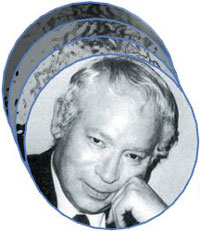 |
|
Steven Weinberg |
Čestice od kojih je izgrađen atom, koje su proizvod dizajna daleko izvan ljudskog shvatanja i imaju tačno određene strukture koje počivaju na krajnje osetljivoj ravnoteži, nisu nastale putem slučaja i ne kreću se slučajno prema istom cilju. Ta savršenost vodi mnoge istraživače koji se bave tim predmetom do veoma značajnog zaključka: to je "stvaranje" za koje postoji nenadmašan nadzor u svakom njegovom trenutku. Svaka stvorena čestica formirala se u tačno određeno vreme, na tačno određenoj temperaturi i pri tačno određenoj brzini. Izgleda da je taj sistem, koji radi slično časovniku, bio programiran preciznim podešavanjem pre nego što je postao aktivan. To znači da su stvaranje i savršeni svemir koji je nastao kao rezultat tog stvaranja, bili oblikovani pre stvaranja i kasnije stavljeni u dejstvo.
Volja koja uređuje, oblikuje i nadgleda svemir je svakako volja koja pripada Tvorcu, Stvoritelju svega.
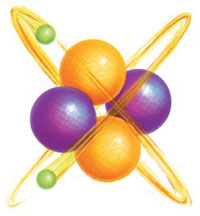 |
|
The Helium Atom |
Dizajn se može opaziti ne samo u atomu, već i u svakom velikom ili malom predmetu koji postoji u svemiru. Te prvobitno stvorene čestice, ne formiraju samo atome najprostijeg elementa vodonika, već takođe formiraju sve ogromne sisteme koji postoje u okviru galaksija, kvazara itd., po veličanstvenom planu i po savršenom redu i ravnoteži. Prema tome, nemoguće je da se čestice, koje su potrebne za formiranje atoma spoje slučajno i uspostave osetljivu ravnotežu. Bilo bi mnogo nerazumnije i nelogičnije tvrditi da su se planete, galaksije i ukratko svi sistemi uključeni u delovanje svemira formirali slučajno i sami od sebe razvili ravnotežni odnos. Volja koja stvara taj jedinstveni dizajn je volja Tvorca.
Other atoms formed following the hydrogen atom, which was a miracle on its own. At this point, various questions come to mind such as "How did other atoms form? Why didn't all protons and neutrons form only the hydrogen atom? How did the particles decide which atoms they would form and in what quantities?" The answer to these questions again takes us to the same conclusion. There is a great power, control and design in the formation of the hydrogen atom and all the other atoms that followed. This control and design exceeds the capacity of the human mind and points to the fact that the universe is obviously a "creation." The laws of physics that were established in the aftermath of the Big Bang have not changed at all during the approximately 17 billion years that have passed. Furthermore, these laws are based on such precise calculations that even millimetric deviations from their present values may cause results upsetting the general structure and order in the entire universe. The words of famous physicist Prof. Stephen Hawking addressing this point are quite interesting. Hawking explains that these phenomena are based on much finer calculations then we can imagine:
If the rate of expansion one second after the big bang had been smaller by even one part in a hundred thousand million million, the universe would have recollapsed before it ever reached its present size.9
Svemir, koji je izgrađen na tako istančanim proračunima, očigledno otkriva da vreme, prostor i materija nisu spontano nastali, već su stvoreni aktivnošću Tvorca. Apsolutno je nemoguće i pogrešno smatrati da je svemir nastao kao rezultat prostog slučaja, odnosno da je tako formiran atom, gradivni blok svemira.
Nije ništa neobično što su mnogi naučnici koji rade na tom predmetu prihvatili postojanje bezgranične sile i njene moći u stvaranju svemira. Ugledni astrofizičar Hju Ros (Hugh Ross) ovako objašnjava da je Tvorac svemira izvan svih dimenzija:
"Po definiciji, vreme je ta dimenzija u kojoj se fenomeni uzroka i efekta odigravaju. Ako nema vremena, nema uzroka i efekta. Ako je početak vremena podudaran sa početkom svemira, kako teorema prostora-vremena kaže, onda uzrok svemira mora da bude neki entitet koji deluje u vremenskoj dimenziji potpuno nezavisnoj, koja je pre postojala od vremenske dimenzije kosmosa... Ono nam kaže da je Tvorac transcendentan i da deluje izvan dimenzijama ograničenog svemira. Ono nam kaže da Bog nije sam svemir, niti je Bog sadržan u okviru svemira.10
The most important aspect of the Big Bang is that it gives mankind the chance to understand Allah's power better. The origination of a universe with all the matter it contains from nothing is one of the greatest signs of Allah's might. The delicate equilibrium in the energy at the moment of the explosion is a very big sign directing us towards thinking about the infinity of Allah's knowledge.
He has made night and day subservient to you, and the sun and moon and stars, all subject to His command. There are certainly Signs in that for people who use their intellect. (Surat an-Nahl: 12)
Osnovne Sile U Svemiru
Napomenuli smo da su zakoni fizike u svemiru uspostavljeni prlikom njegovog stvaranja. Ovi zakoni zasnovani su na "četiri osnovne sile" koje su poznate savremenoj fizici. Te sile bile su formirane zajedno sa formiranjem prvih subatomskih čestica u tačno određenom trenutku i tako uspostavljen celokupan red i sistem u svemiru. Atomi, koji izgrađuju materijalni svemir, duguju svoje postojanje, pa čak i raspored u svemiru međusobnom dejstvu tih sila. Te sile su sila privlačenja masa poznata kao gravitaciona sila, elektromagnetna sila, jaka nuklearna sila i slaba nuklearna sila. Sve imaju tačno određen intenzitet i oblast dejstva. Jake i slabe nuklearne sile deluju samo na subatomskom nivou. Preostale dve - gravitaciona sila i elektromagnetna sila - upravljaju sastavljanjem atoma, drugim rečima "materije". Red bez greške koji postoji na Zemlji je ishod koji potiče iz veoma osetljivih proporcija tih sila. Poređenje tih sila proizvodi veoma zanimljiv rezultat. Sva materija koja je stvorena i rasprostranjena u svemiru posle stvaranja, uobličena je efektom tih sila koje imaju široke ponore između sebe. Ispod su iznenađujuće različite vrednosti tih sila prikazane u međunarodnim standardnim jedinicama:
Ove osnovne sile omogućavaju formiranje materijalnog svemira kroz savršeno raspoređivanje snage. Proporcija između sila zasnovana je na tako osetljivoj ravnoteži da one mogu da stvore ovakav efekat na česticama samo u tim određenim proporcijama.
1. Jaka nuklearna sila - ogromna snaga u jezgru
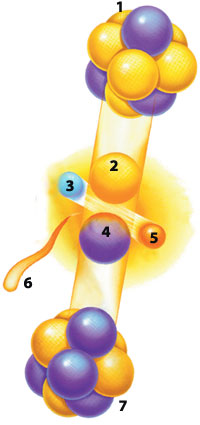 |
|
1. Carbon -14: 6 protons, 8 neutrons |
Videli smo da je sve oko nas, uključujući i nas same, sačinjeno od atoma i da se ti atomi sastoje od mnogo čestica. Koja sila onda drži zajedno sve čestice koje formiraju jezgro atoma? Ta sila, koja čuva jezgro netaknutim i koja je najjača sila definisana zakonima fizike, je "jaka nuklearna sila".
|
Jaka nuklearna sila: 15 |
Ova sila obezbeđuje da protoni i neutroni u jezgru atoma ostaju zajedno i da se ne odvajaju. Jezgro atoma formirano je na taj način. Ova sila je tako jaka da skoro vezuje jedne za druge protone i neutrone u okviru jezgra. Zbog toga se male čestice koje poseduju tu silu zovu "gluoni", što na latinskom znači "lepak". Snaga te veze je veoma pažljivo podešena. Intenzitet te sile bio je naročito raspoređen da bi obezbedio da se protoni i neutroni održavaju na izvesnoj udaljenosti jedni od drugih. Da je ova sila bila samo malo jača, protoni i neutroni stalno bi se sudarali. Da je ova sila bila samo malo slabija, oni bi se rasuli. Ova sila ima tačno odgovarajući stepen koji je prilikom stvaranja bio potreban za formiranje jezgra atoma.
Bombardovanje Hirošime i Nagasakija pokazalo je razorno dejstvo jake nuklearne sile kada se jednom oslobodi. Jedini razlog zbog koga su atomske bombe, na koje ćemo se detaljnije vratiti u narednim poglavljima, toliko efektivne, jeste oslobađanje malih količina te sile sakrivene u jezgru atoma.
2. Slaba nuklearna sila - sigurnosni pojas atoma
Jedan od najznačajnijih činilaca u održavanju reda na Zemlji je ravnoteža u okviru atoma. Ta ravnoteža obezbeđuje da objekti ne počnu iznenada da se raspadaju ili da emituju štetno zračenje. "Slaba nuklearna sila" odgovorna je za tu ravnotežu između protona i neutrona u atomskom jezgru. Ta sila ima značajnu ulogu u održavanju ravnoteže u jezgru koje sadrži veliki broj protona i neutrona.
Za vreme održavanja ove ravnoteže, neutron, ako je potrebno, može da se promeni u proton. Pošto se na kraju tog procesa broj protona u jezgru menja, atom se takođe menja i postaje drugi atom. Rezultat je ovde veoma značajan. Atom se transformiše u različiti atom bez dezintegrisanja i nastavlja svoje postojanje. Sigurnosni pojas štiti žive organizme od opasnosti koje bi inače nastale od čestica koje se nekontrolisano oslobađaju i štete ljudima.
3. Elektromagnetna sila - sila koja održava elektrone u orbiti
Otkriće ove sile najavilo je novo doba u svetu fizike. Tada je shvaćeno da svaka čestica nosi "električno naelektrisanje", koje odgovara sopstvenim strukturnim karakteristikama, i da postoji sila između tih električnih naelektrisanja. Ta sila obezbeđuje da se čestice sa suprotnim naelektrisanjem međusobno privlače i da se čestice sa istim naelektrisanjem odbijaju, time obezbeđujući da se protoni u jezgru atoma i elektroni koji putuju u orbitama oko njega međusobno privlače. Na taj način, "jezgro" i "elektroni", dva osnovna elementa atoma, ostaju zajedno.
Najmanje promene jačine ove sile prouzrokovale bi da se elektroni veoma udalje od jezgra ili da padnu na jezgro. U oba slučaja, postalo bi nemoguće da atom postoji, a prema tome i materijalni svemir. Ipak, od prvog trenutka formiranja ove sile, protoni u jezgru su privlačili elektrone delovanjem tačno određene sile potrebne za formiranje atoma. Zahvaljujući vrednosti ove sile procesi u atomskom jezgru nesmetano se odvijaju.
4. Gravitaciona Sila - Sila Koja Drži Svemir Zajedno
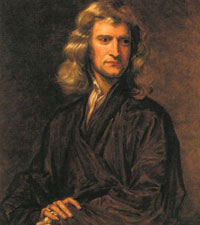 |
|
Vrhovni dizajn i savršeni red preovlađuju u celokupnom svemiru koji se upravlja po ovim osnovnim silama. Pokretač ovog reda je izvan svake sumnje Tvorac koji je sve savršeno stvorio. Isak Njutn (Isaac Newton, 1642-1727), otac savremene fizike i nebeske mehanike, "jedan od najvećih naučnika koji su ikada živeli", ovako skreće pažnju na tu činjenicu: |
To je jedina sila koju svakodnevno osećamo, ali o kojoj najmanje znamo. Obično poznata kao gravitacija, ta sila se u stvari zove "sila privlačenja mase". Iako je to najslabija sila u poređenju sa drugim silama, njom se međusobno privlače veoma velike mase. Ova sila je razlog zbog koga galaksije i zvezde u svemiru ostaju u orbitama jedne sa drugima. Zemlja i druge planete ostaju u određenoj orbiti oko Sunca opet uz pomoć te gravitacione sile. Mi smo u mogućnosti da hodamo po zemlji zbog te sile. Kada bi nastao pad u vrednosti te sile, zvezde bi padale, zemlja bi bila otrgnuta od svoje orbite, a mi bismo se sa Zemlje rasuli u svemir. U slučaju najmanjeg porasta ove sile, zvezde bi se sudarale jedne sa drugima, Zemlja bi ubrzano krenula prema Suncu, a mi bismo bili uvučeni u Zemljinu koru. Ovo sada može da izgleda kao veoma udaljena mogućnost, ali ona bi bila neizbežna ako bi se ova sila razlikovala od svoje sadašnje vrednosti, čak i za samo veoma kratko vreme.
Svi naučnici koji vrše ovakva istraživanja priznaju da su precizno određene vrednosti ovih sila neophodne za postojanje svemira.
Govoreći o tome, poznati molekularni biolog Majkl Denton (Michael Denton) u svojoj knjizi $Sudbina prirode: kako zakoni biologije otkrivaju svrhu u svemiru$ (Nature's Destiny: How the Laws of Bilogy Reveal Purpose in the Universe) izjavljuje:
"Ako bi, na primer, gravitaciona sila bila milijardu puta jača, onda bi svemir bio mnogo manji, a njegova istorija postojanja mnogo kraća. Prosečna zvezda imala bi masu milijardu puta manju od Sunca i životni vek od oko jedne godine. U drugu ruku, da je gravitacija bila manje snažna, ne bi se nikada formirale ni zvezde ni galaksije. Drugi odnosi i vrednosti nisu ništa manje kritični. Da je jaka nuklearna sila bila samo malo slabija, jedini stabilan element bio bi vodonik. Nikakvi drugi atomi ne bi mogli da postoje. Da je ona bila samo malo jača u odnosu na elektromagnetsku silu, onda bi atomsko jezgro koje se sastoji od samo dva protona bilo stabilna odlika svemira - što bi značilo da ne bi postojao vodonik, a ako bi se razvile bilo kakve zvezde ili galaksije one bi bile potpuno različite od onoga kako danas izgledaju. Očigledno, da te različite sile i konstante nisu imale tačno one vrednosti koje imaju, ne bi bilo zvezda, supernova, planeta, atoma, niti života."11
Ugledni fizičar Pol Dejvis (Paul Davies) ističe svoje divljenje predodređenim vrednostima zakona fizike u svemiru:
"Kada neko počne da proučava kosmologiju, nagomilavaju se neverovatne stvari. Skora otkrića o praiskonskom kosmosu nas obavezuju da prihvatimo da je svemir pokrenut u to kretanje uz saradnju neverovatne preciznosti."12
Savršeni dizajn i savršeni red preovlađuju u celokupnom svemiru konstruisanom na temeljivima koje su obezbedile te osnovne sile. Vlasnik tog reda je, izvan svake sumnje, Tvorac, koji je sve savršeno stvorio. Tvorac, gospodar svih svetova, drži zvezde u svojim orbitama najslabijom od svih sila i drži jezgro malih atoma kao celinu najjačom od svih sila. Sve te sile deluju u skladu sa "merama" koje je on odredio.
He to whom the dominion of the heavens and the earth belongs. He does not have a son and He has no partner in His dominion. He created everything and determined it most exactly. (Surat al-Furqan: 2)
 |
|
U sredini bez gravitacije moguće je opstati samo u kratkom vremenskom razdoblju, i to u specijalnoj opremi. Živi organizmi mogu da preživljavaju samo u sistemu u kome postoji gravitacija. |
Footnotes
1. David Filkin, Stephen Hawking's Universe:The Cosmos Explained, Basic Books, October 1998, pp. 85-86
2. Stephen Hawking's A Brief History of Time A Reader's Companion (Edited by Stephen Hawking; prepared by Gene Stone), New York, Bantam Books, 1982, p. 62-63
3. Henry Margenau, Roy Abraham Vargesse, Cosmos, Bios, Theos, La Salla IL: Open Court Publishing, 1992, p. 241
4. H. P. Lipson, "A Physicist Looks at Evolution", Physics Bulletin, vol. 138, 1980, p. 138
5. Taşkın Tuna, Uzayın Sırları (The Secrets of Space), Boğaziçi Yayınları, p.185
6. Colin A. Ronan, The Universe Explained, The Earth-Dwellers's Guide to the Mysteries of Space, Henry Holt and Company, pp. 178-179
7. Taşkın Tuna, Uzayın Sırları (The Secrets of Space), Boğaziçi Yayınları, p.186
8. Steven Weinberg, The First Three Minutes, A Modern View of the Origin of the Universe, Basic Books, June 1993, p. 87
9. Stephen W. Hawking, A Brief History of Time, Bantam Books, April 1988, p. 121
10. Hugh Ross, The Creator and the Cosmos, How Greatest Scientific Discoveries of the Century Reveal God, Colorado: NavPress, Revised Edition, 1995, p. 76 
11. Michael Denton, Nature's Destiny:How The Laws of Biology Reveal Purpose in the Universe, The New York: The Free Press, 1998, pp. 12-13
12. Paul Davies, The Accidental Universe, Cambridge: Cambridge University Press, 1982, Foreword